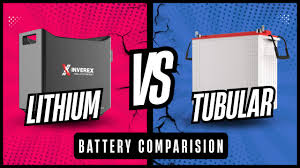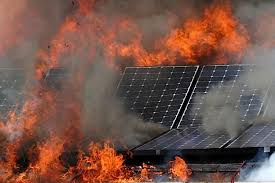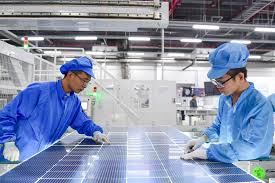Solar Fire Hazard: What I’ve Learned About the Causes and How to Prevent Them
As a solar installer who has worked on countless projects, I’ve seen how solar energy can transform lives — but I’ve also seen what happens when it’s not done right.
One of the biggest mistakes people make in solar installation is overlooking the risk of a solar fire hazard.
If you’ve ever wondered what causes solar fires, how to prevent them, and how to design your system safely, this post is for you.
I’ll also show you how I use the Globisun App to accurately size solar systems and avoid the kind of errors that often lead to solar fire hazards.
⚠️ What Is a Solar Fire Hazard?
A solar fire hazard occurs when components in a solar power system — like panels, inverters, batteries, or wiring — overheat or short-circuit, resulting in a potential fire.
It usually stems from poor solar system sizing, faulty wiring, or low-quality components.
From my experience, more than 80% of solar fire incidents could have been avoided if proper sizing and installation were done from the start — something that’s easy to achieve today using tools like the Globisun App.
🔍 Main Causes of Solar Fire Hazards (and How I Spot Them)
After years of installations, I’ve noticed that most solar fire hazards come from a few common issues.
Let me break them down for you:
1. Poor Solar System Sizing
This is the most common culprit. When a solar system is undersized or oversized, components like inverters, cables, and batteries end up handling more current than they should.
This causes overheating, arcing, and sometimes, fire.
Before I install any system, I always calculate everything using the Globisun App. It’s a smart solar energy calculator that helps me size systems accurately and match each component to the customer’s exact load. That way, nothing is overworked — and fire risks are minimized.

2. Loose or Faulty DC Connections
Loose MC4 connectors or poorly crimped terminals are like ticking time bombs.
Because DC current doesn’t alternate, any small gap can create a continuous arc, which easily starts a fire.
Whenever I install, I double-check every terminal, use original connectors, and make sure they’re properly locked in.

3. Using Substandard Components
I’ve seen cheap, fake inverters and connectors melt under normal load.
They may look like a bargain at first, but they lack proper insulation and quality control — which makes them highly flammable.
Always buy your solar materials from trusted brands and verified suppliers. Safety should never be compromised.

4. Faulty Installation Practices
Bad wiring, wrong polarity, undersized cables, or skipping grounding — these are mistakes that lead directly to solar fire hazards.
Some DIY installers don’t realize how dangerous this can be.
Even as a professional, I still rely on Globisun before starting a job. It gives me a clear idea of the proper battery bank, inverter size, and number of solar panels needed for safe operation.

5. Lack of Proper Circuit Protection
Skipping fuses, isolators, or breakers means that in the event of a fault, nothing will stop the current from flowing.
A well-designed system must have proper DC and AC protection devices — it’s non-negotiable.

6. Overloading and Poor Maintenance
Adding more appliances to your system without checking capacity is one of the fastest ways to overload and damage it.
I’ve seen people connect freezers, irons, and pumps to small inverters — and then wonder why the wires heat up.
Regular inspection and recalculating system capacity with Globisun can prevent such problems.
🧯 How I Prevent Solar Fire Hazards on Every Job
Through experience, I’ve developed a routine that ensures safety and performance.
Here’s what I always do (and what I recommend you do too):
- ✅ Use the Globisun App to get accurate solar sizing before installation.
- ✅ Choose certified solar products — panels, inverters, and cables that meet international standards.
- ✅ Install fuses, isolators, and breakers on every circuit.
- ✅ Ground every system properly.
- ✅ Hire experienced, certified solar installers.
- ✅ Inspect and maintain the system every 6–12 months.
A well-sized and well-installed system doesn’t just perform better — it’s also safer and more durable.
💡 Why I Trust the Globisun App for Safer Solar Design
When I first discovered Globisun, I realized how much time and guesswork it could save.
Now, I use it on nearly every project because it helps me:
- Instantly calculate accurate solar system sizing
- Find the ideal inverter, panel, and battery match
- Detect potential overloads before installation
- Access weather updates, product guides, and solar error codes
The Globisun App helps both installers and homeowners design safer, more reliable solar systems — reducing the risk of solar fire hazards significantly.

🚀 Final Thoughts
In my years of experience, I’ve learned one truth: solar fire hazards are preventable.
They don’t happen because solar energy is dangerous — they happen because people skip the basics.
If you take time to size your system correctly, use quality components, and install with care, you’ll enjoy clean, reliable energy for years without problems.
That’s why I recommend starting every project with the Globisun App. It’s your smart guide to solar energy — helping you avoid mistakes that could cost you money, time, or even your safety.
👉 Download Globisun on Google Play today and take full control of your solar energy system. Do it once, do it right, and keep your solar setup safe from fire hazards.







